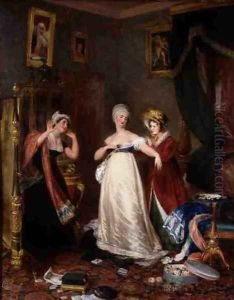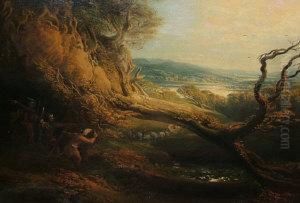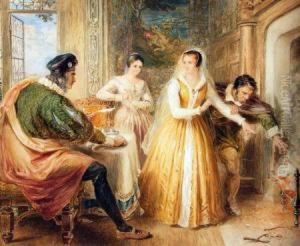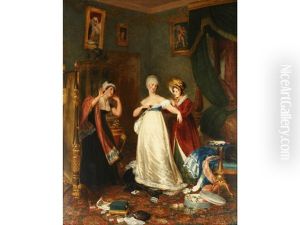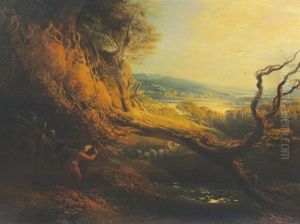Henry James Richter Paintings
Henry James Richter was an English painter, illustrator, and writer, born in 1772. He was a multifaceted artist known for his contributions to the Romantic movement, although he has not remained as widely recognized as some of his contemporaries. Richter's work spanned a variety of genres, including historical scenes, landscapes, and literary illustrations, reflecting the broad intellectual and artistic interests that characterized the Romantic period.
Richter's early life was shaped by his exposure to the arts, and he showed an early inclination towards painting. His formal training in art began in London, where he honed his skills and developed a distinct style that emphasized emotion and natural beauty, key elements of Romanticism. Throughout his career, Richter sought to capture the sublime and the picturesque, aspects that were highly valued in his era. His paintings often depicted dramatic landscapes and heroic historical events, aiming to evoke a deep emotional response from the viewer.
In addition to his work as a painter, Henry James Richter was also an accomplished illustrator and writer. He contributed illustrations to books and literary magazines, which helped to disseminate his artistic vision to a broader audience. His writings, including essays on art theory and criticism, reflect his deep engagement with the philosophical underpinnings of the Romantic movement and offer insight into his approach to art.
Despite his contributions to the arts, Richter's work did not achieve the same level of fame and recognition during his lifetime as some of his peers. However, his paintings and writings have been revisited by art historians and scholars, who have noted his unique approach to Romanticism and his exploration of the emotional and psychological dimensions of art. Henry James Richter passed away in 1857, leaving behind a body of work that continues to be studied for its contributions to the Romantic movement and its reflection of the intellectual and artistic currents of his time.
